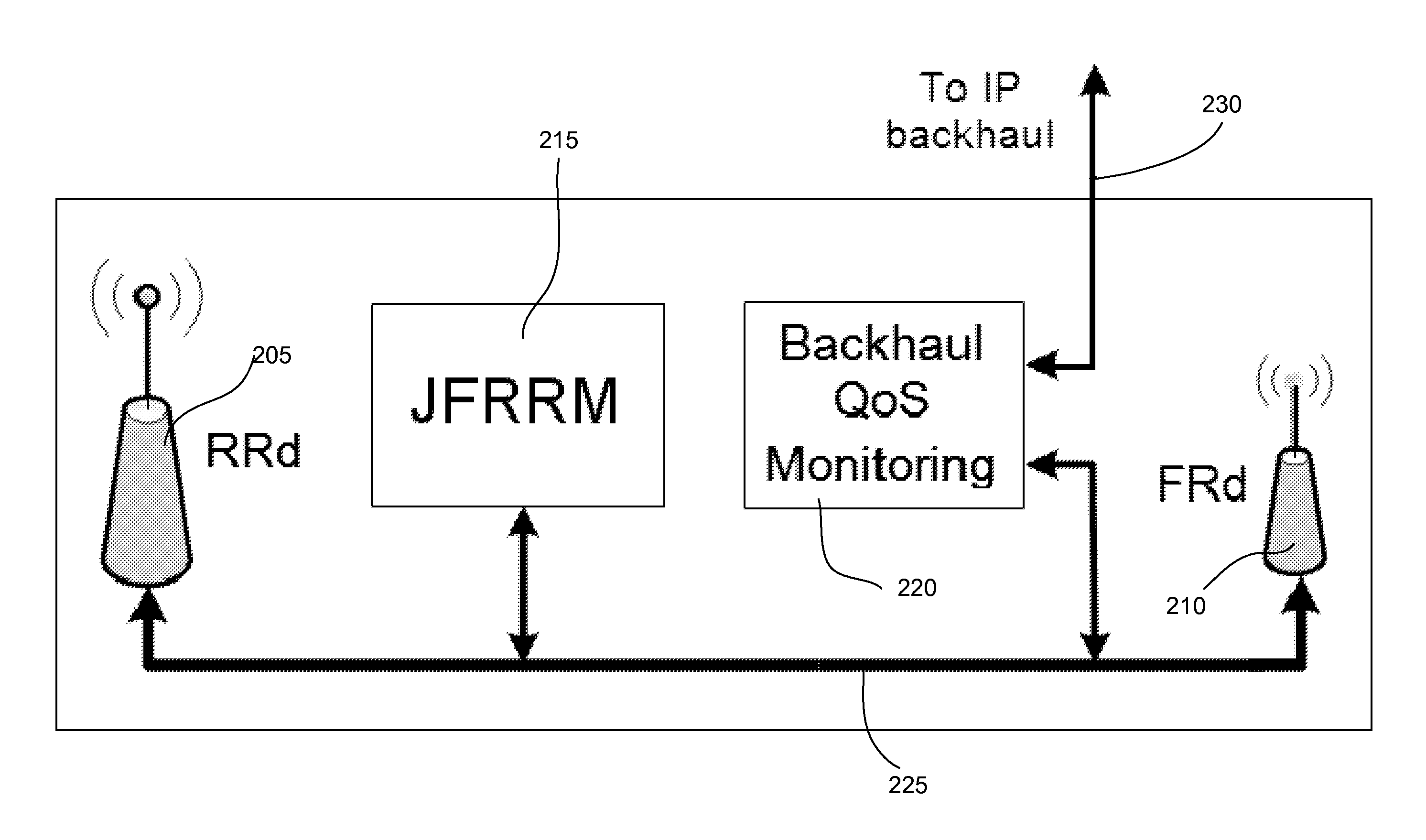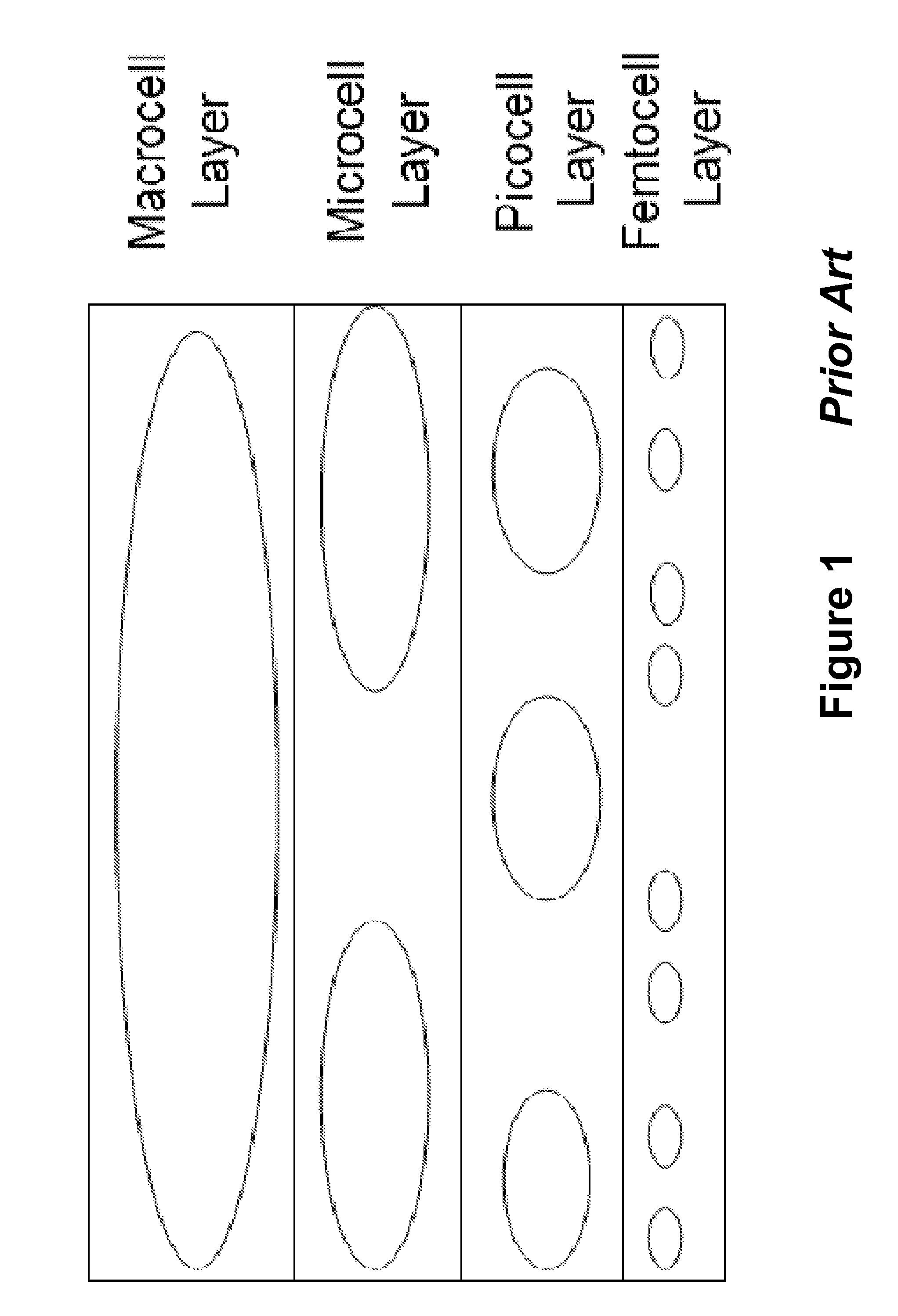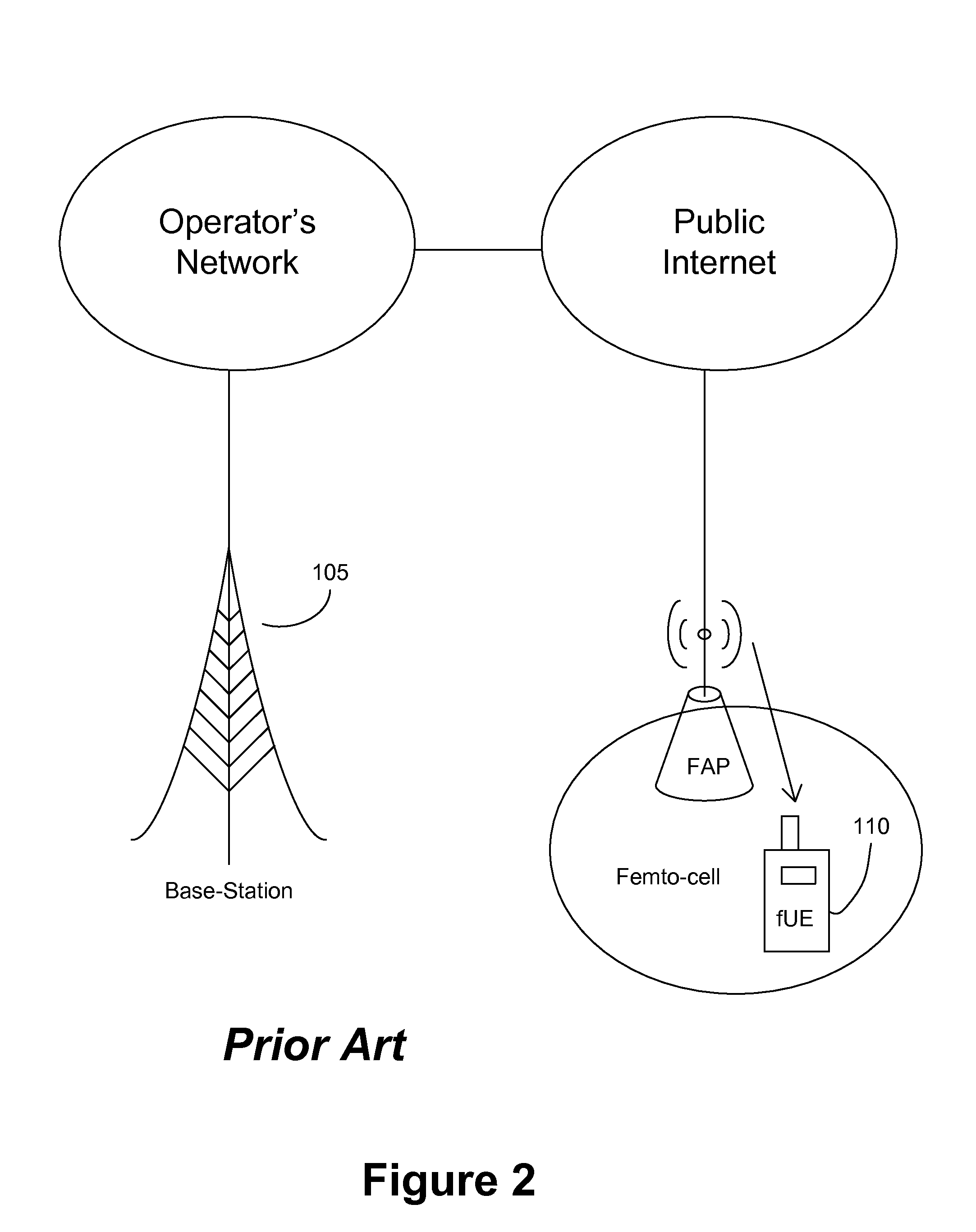Femto-relay systems and methods of managing same
- Summary
- Abstract
- Description
- Claims
- Application Information
AI Technical Summary
Benefits of technology
Problems solved by technology
Method used
Image
Examples
Embodiment Construction
is better understood when read in conjunction with the appended drawings. For the purposes of illustration, there is shown in the drawings exemplary embodiments of the present invention, but the subject matter is not limited to the specific elements and instrumentalities disclosed.
[0033]FIG. 1 illustrates conventional coverage areas for cells with varying extensions.
[0034]FIG. 2 illustrates a conventional femto-cell architecture.
[0035]FIG. 3 provides a conceptual overview of a femto-relay system, in accordance with an exemplary embodiment of the present invention.
[0036]FIG. 4 illustrates operation of a femto-relay system in a macro-cell, in accordance with an exemplary embodiment of the present invention.
[0037]FIG. 5 illustrates the integration of a femto-relay system in a cellular network, in accordance with an exemplary embodiment of the present invention.
[0038]FIG. 6 provides a block diagram hardware components for a femto-relay system, in accordance with an exemplary embodiment ...
PUM
 Login to View More
Login to View More Abstract
Description
Claims
Application Information
 Login to View More
Login to View More - Generate Ideas
- Intellectual Property
- Life Sciences
- Materials
- Tech Scout
- Unparalleled Data Quality
- Higher Quality Content
- 60% Fewer Hallucinations
Browse by: Latest US Patents, China's latest patents, Technical Efficacy Thesaurus, Application Domain, Technology Topic, Popular Technical Reports.
© 2025 PatSnap. All rights reserved.Legal|Privacy policy|Modern Slavery Act Transparency Statement|Sitemap|About US| Contact US: help@patsnap.com



